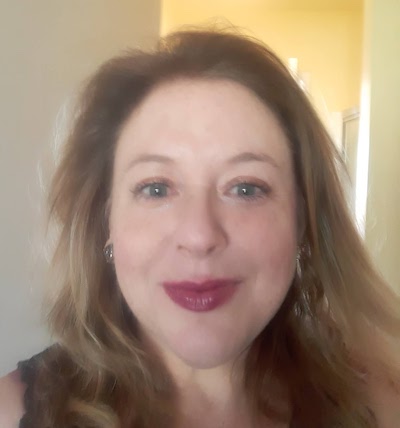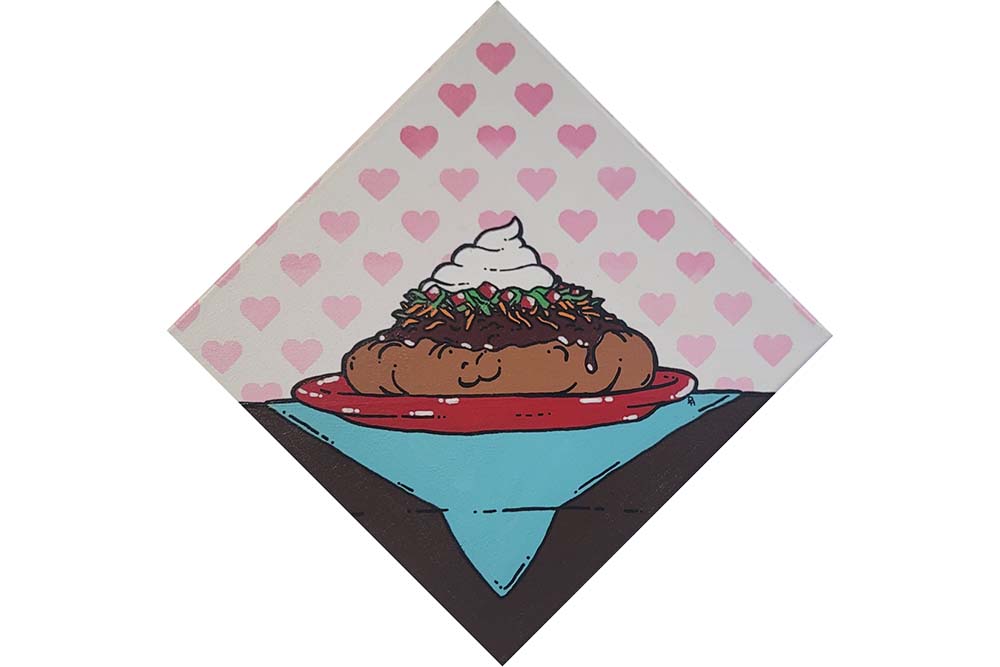
- Details
- By Tamara Ikenberg
Whether you’re looking for love, friendship, or just seeking some sweet Native-made gifts for yourself, Indian Country is the place to be during Valentine’s time.
This weekend and next week, Indigenous expressions of heartwork and artwork include
a virtual speed dating experience, a couple of amorous Southwest art shows and markets, and an encounter with an expert in traditional and pop birchbark and quill art.
Allow Native News Online’s event guide to set you up with the perfect Valentine’s Day happenings, and let your love flow naturally.
Outdoor Valentine Art Market
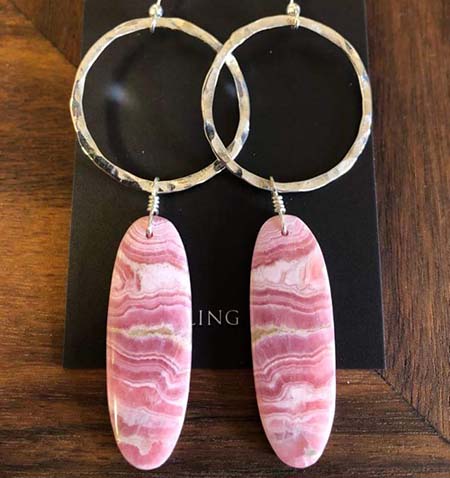 Rhodochrosite and sterling silver earrings by Navajo artist Marcus Arviso will be available at the Valentine's Art Market on Thursday, Feb. 10 at the Navajo Nation Museum in Window Rock, AZ. (Marcus Arviso)
Rhodochrosite and sterling silver earrings by Navajo artist Marcus Arviso will be available at the Valentine's Art Market on Thursday, Feb. 10 at the Navajo Nation Museum in Window Rock, AZ. (Marcus Arviso)
WHEN: Thursday, Feb.10, 10 a.m. to 5 p.m.
WHERE: Navajo Nation Museum, Hwy 264 and Postal Loop Rd, Window Rock, AZ
If you live in or around Navajo Nation, you still have time to find that lovely last-minute Valentine’s Day surprise.
The Navajo Nation Museum is hosting an Outdoor Valentine Art Market filled with jewelry and more treasures from Navajo artists and artisans.
Among the available items are large, colorful stone heart rings lined with silver from Tonya June Rafael and cool, contemporary earrings made from materials including turquoise, silver and ravishing pink-hued rhodochrosite, from Marco Arviso.
All Types of Love: An Art Show about Love
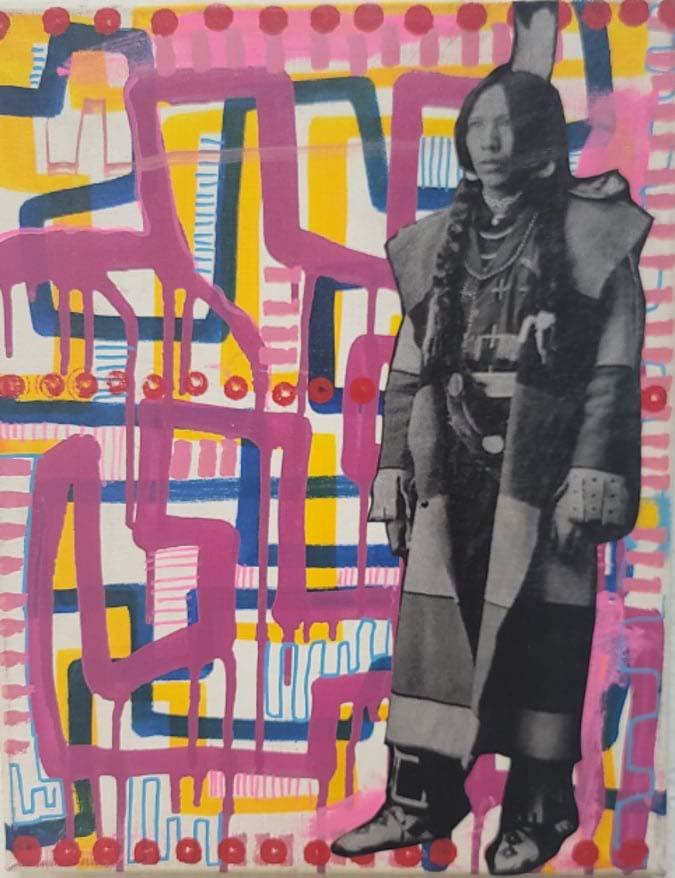 The mixed media piece Lover and a Fighter by Laguna Pueblo artist Karl "King Karl" Bautista is part of The All Types of Love art show taking place both online and in person on Saturday, Feb. 12 at Rebel Prints in Albuquerque, NM. (Karl Bautista)WHEN: Saturday, Feb. 12, 5 p.m. to 8 p.m.
The mixed media piece Lover and a Fighter by Laguna Pueblo artist Karl "King Karl" Bautista is part of The All Types of Love art show taking place both online and in person on Saturday, Feb. 12 at Rebel Prints in Albuquerque, NM. (Karl Bautista)WHEN: Saturday, Feb. 12, 5 p.m. to 8 p.m.
WHERE: Rebel Prints, 208 3rd St. SW, Albuquerque, NM and Rebel Prints Facebook Live; Event page
Rebel Prints, one of Albuquerque’s funkiest independent Native-owned art spaces, is putting on a show celebrating all kinds of love, in honor of Valentine’s Day.
“We need more love,” Rebel Prints owner and Laguna Pueblo member Karl “King Karl” Bautista told Native News Online. “In the current state of the world, it will help us get through the bad or difficult times.”
Featuring work by ten Native and non-Native artists, the show is an edgy burst of creative affection with a dash of humor.
Pieces include a series of Bautista’s symbolic, graffiti-inspired images, and a mouthwatering and heartfelt tribute to the Indian Taco by Comanche artist Desiree Hamm of Rolling Thunder Art .
Bautista’s multimedia piece Lover and a Fighter, which pairs a vintage photo of an Indigenous man with an abstract background of brightly colored lines and shapes, boldly represents its two-pronged title.
“It's a Native American warrior. He had to be a lover because his people are still alive, and a fighter, because he's a warrior,” Bautista said. “The lines represent the different roads he has taken.”
Indigenous Valentine’s Virtual Speed Friending Event
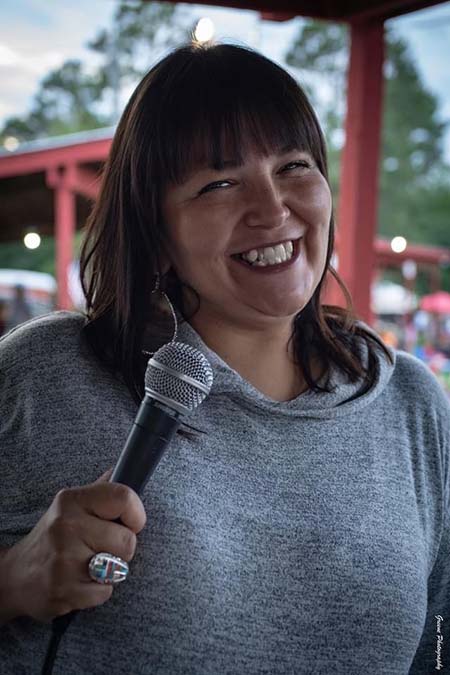 Powwow MC and performer Deanna Rae StandingCloud (Red Lake Nation of Anishinaabe) will host the Indigenous Valentine’s Virtual Speed Friending Event on Sunday, Feb.13. (Nedahness Rose Greene) WHEN: Sunday, Feb.13, 12 p.m. and 7 p.m.
Powwow MC and performer Deanna Rae StandingCloud (Red Lake Nation of Anishinaabe) will host the Indigenous Valentine’s Virtual Speed Friending Event on Sunday, Feb.13. (Nedahness Rose Greene) WHEN: Sunday, Feb.13, 12 p.m. and 7 p.m.
WHERE: Tickets are $15. Purchase here
Cupid is swooping into Indian Country via a new online event designed to match up friends or potential romantic partners in time for Valentine’s Day.
And while you may not be able to control those stomach butterflies, there’s no need to feel self-conscious or anxious.
“There's no pressure to snag up right away. We're just chillin’ and hanging out,”says event host, comedian, and Powwow MC Deanna Rae StandingCloud (Red Lake Nation of Anishinaabe). “It takes bravery and vulnerability to actually sign up for this, I just want to encourage people to take that risk and take a step forward,” StandingCloud told Native News Online.
Designed as a safe and fun way to help folks find friends and relationships beyond their familiar networks, the Indigenous Valentine’s Virtual Speed Friending Event was conceived by Victoria Marie (Sisseton Wahpeton), founder of Indigenous Lotus, a Twin Cities-based collective of Indigenous women dedicated to helping people heal themselves through mind and body work like yoga and sound therapy.
Victoria Marie said a virtual Valentine’s event seemed like a perfect solution to finding companionship when a lot of people are still staying home because of the Covid-19 pandemic, whether by choice or necessity, and an effective way to build bonds within the Indigenous community.
“I have never seen anything like this event before. Putting ourselves in these types of spaces helps us all open up and really get connected,” she said. “I just like to see more connection.The stronger we are as a people, the more we're going to thrive, and the more medicine we're going to put in our medicine bags.”
Victoria Marie explained how the event, which will be powered by a combination of Zoom and Glimpse (a platform made for randomized one-on-one timed calls), will unfold
“It's going to be like when you're grouped up on Zoom, and you're just paired with one other person. And it is going to switch every four minutes or so,” she said.
To remove any guesswork about a participant’s intentions, preferences or gender identity, Victoria Marie is developing a color-coding system. People will be paired up based on their interests and intentions.
“If people are there for just friendship, they could wear something like a yellow ribbon or a yellow sticker,” she said. “If they're like,‘Hey, I'm here for romance,’ they can wear a red sticker or ribbon.”
Participants will be clued in to all the rules and recommendations when they register. There will also be breakout sessions helmed by StandingCloud, who Victoria Marie is confident will keep the event running smoothly with plenty of nerve-soothing Native humor.
“I love Deanna. She has a really good sense of humor and she is one of a kind for sure,” Victoria Marie said. “She's good at helping with icebreakers and making everybody comfortable. She's just one of those people that everyone is drawn to.”
Virtual Artist Discussion with Christal Ratt
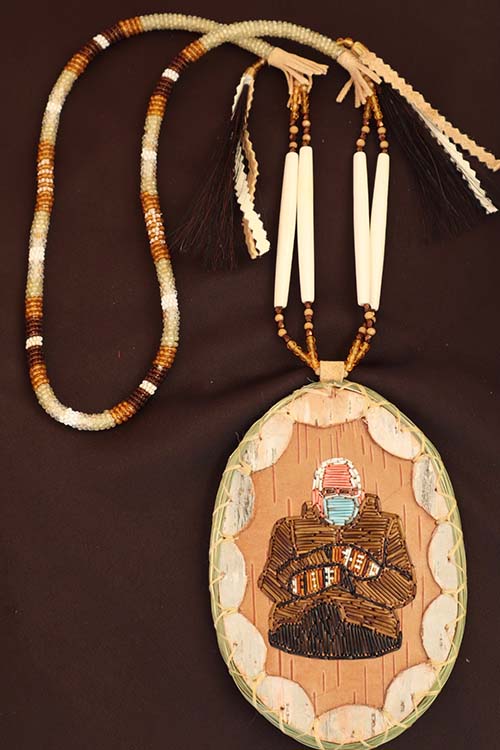 A Bernie Sanders medallion by Algonquin Anishnabe artist Christal Ratt. The Mitchell Museum of the American Indian in Evanston, Illinois will host a Virtual Artist Discussion with Ratt on Thursday, Feb. 17. (Christal Ratt)WHEN: Thursday, Feb. 17, 4 p.m.
A Bernie Sanders medallion by Algonquin Anishnabe artist Christal Ratt. The Mitchell Museum of the American Indian in Evanston, Illinois will host a Virtual Artist Discussion with Ratt on Thursday, Feb. 17. (Christal Ratt)WHEN: Thursday, Feb. 17, 4 p.m.
WHERE: Register here
When the image of a be-mittened Senator Bernie Sanders rocking his casual cold-weather style at the 2021 presidential inauguration went viral, Native artists went wild making art out of the much-memed moment.
A bonanza of embroidered, illustrated, and beaded Bernies flooded social media, reflecting Indigenous affection for the outspoken, equality-minded statesman.
One of the most ambitious and exquisite examples of Bernie-inspired art came from Christal Ratt, who fashioned an intricately detailed bundled-up Bern medallion out of dyed porcupine quills, birch bark. sweetgrass, horse hair, strips of deer hide, and seed beads.
“I saw a few pieces of his image that inspired me to create one in my own style. It took me about two weeks to quill, bead, etch and assemble back in spring of 2021,” Ratt, an Algonquin Anishinaabe artist from the Mitchikinabikok Inik - Algonquins of Barriere Lake, told Native News Online. “The people in my network have always appreciated “Uncle Bern” for his work and being an ally for Indigenous / BIPOC,”
Next Thursday, Ratt, an award-winning artist known for shaping quills and birch bark (wiigwaas)–into both traditional and contemporary pieces, will talk about her artistic practice and inspirations during a Virtual Artist Discussion hosted by The Mitchell Museum of the American Indian in Evanston, Illinois. There will be a live Q & A following the discussion.
One of Ratt’s other experiments in pop culture work is a version of the helmet the titular bounty hunter wears on the Disney+ Star Wars spinoff The Mandalorian. Ratt calls the helmet ‘Shemaginish,’ or warrior.
Whether she’s making modern or traditional pieces, her motivation is the same.
“Working with Wiigwas to make quillwork, jewelry, baskets, and other pieces, is how I honor and maintain my cultural traditions,” Ratt said. “Our People have always used Wiigwas to make canoes, baskets, cradles, and more.”
When she’s working on her wigwas projects, she says she envisions her ancestors and is empowered by the encouragement and assistance of her parents.
“I feel connected to a time when my grandparents and relatives worked together on a canoe. While I’m working, I try to picture what their days were like based on the stories my parents shared with me,” she said. “Every item that I’ve made has been like a family project. My parents help me harvest my materials at different times of the year. We’ll plan a day to go out on the land to harvest what I need. I am blessed to have such amazing parents.”
To learn more about Ratt’s work, visit her website miiksagwasin.com.
More Stories Like This
Celebrating 50 Years: The Rockwell Museum Looks to the Future with "Native Now"AMC Announces Return of Dark Winds for Season 4, Premiering February 15
Film featuring Teyton Colbert to hit theaters in November
Tlingit Hunter and Artisan Heather Douville Shares Cultural Traditions in New MeatEater Series “Our Way of Life”
What Inspires Indigenous Ballet Dancer Jock Soto
Help us tell the stories that could save Native languages and food traditions
At a critical moment for Indian Country, Native News Online is embarking on our most ambitious reporting project yet: "Cultivating Culture," a three-year investigation into two forces shaping Native community survival—food sovereignty and language revitalization.
The devastating impact of COVID-19 accelerated the loss of Native elders and with them, irreplaceable cultural knowledge. Yet across tribal communities, innovative leaders are fighting back, reclaiming traditional food systems and breathing new life into Native languages. These aren't just cultural preservation efforts—they're powerful pathways to community health, healing, and resilience.
Our dedicated reporting team will spend three years documenting these stories through on-the-ground reporting in 18 tribal communities, producing over 200 in-depth stories, 18 podcast episodes, and multimedia content that amplifies Indigenous voices. We'll show policymakers, funders, and allies how cultural restoration directly impacts physical and mental wellness while celebrating successful models of sovereignty and self-determination.
This isn't corporate media parachuting into Indian Country for a quick story. This is sustained, relationship-based journalism by Native reporters who understand these communities. It's "Warrior Journalism"—fearless reporting that serves the 5.5 million readers who depend on us for news that mainstream media often ignores.
We need your help right now. While we've secured partial funding, we're still $450,000 short of our three-year budget. Our immediate goal is $25,000 this month to keep this critical work moving forward—funding reporter salaries, travel to remote communities, photography, and the deep reporting these stories deserve.
Every dollar directly supports Indigenous journalists telling Indigenous stories. Whether it's $5 or $50, your contribution ensures these vital narratives of resilience, innovation, and hope don't disappear into silence.
 The stakes couldn't be higher. Native languages are being lost at an alarming rate. Food insecurity plagues many tribal communities. But solutions are emerging, and these stories need to be told.
The stakes couldn't be higher. Native languages are being lost at an alarming rate. Food insecurity plagues many tribal communities. But solutions are emerging, and these stories need to be told.
Support independent Native journalism. Fund the stories that matter.
Levi Rickert (Potawatomi), Editor & Publisher

